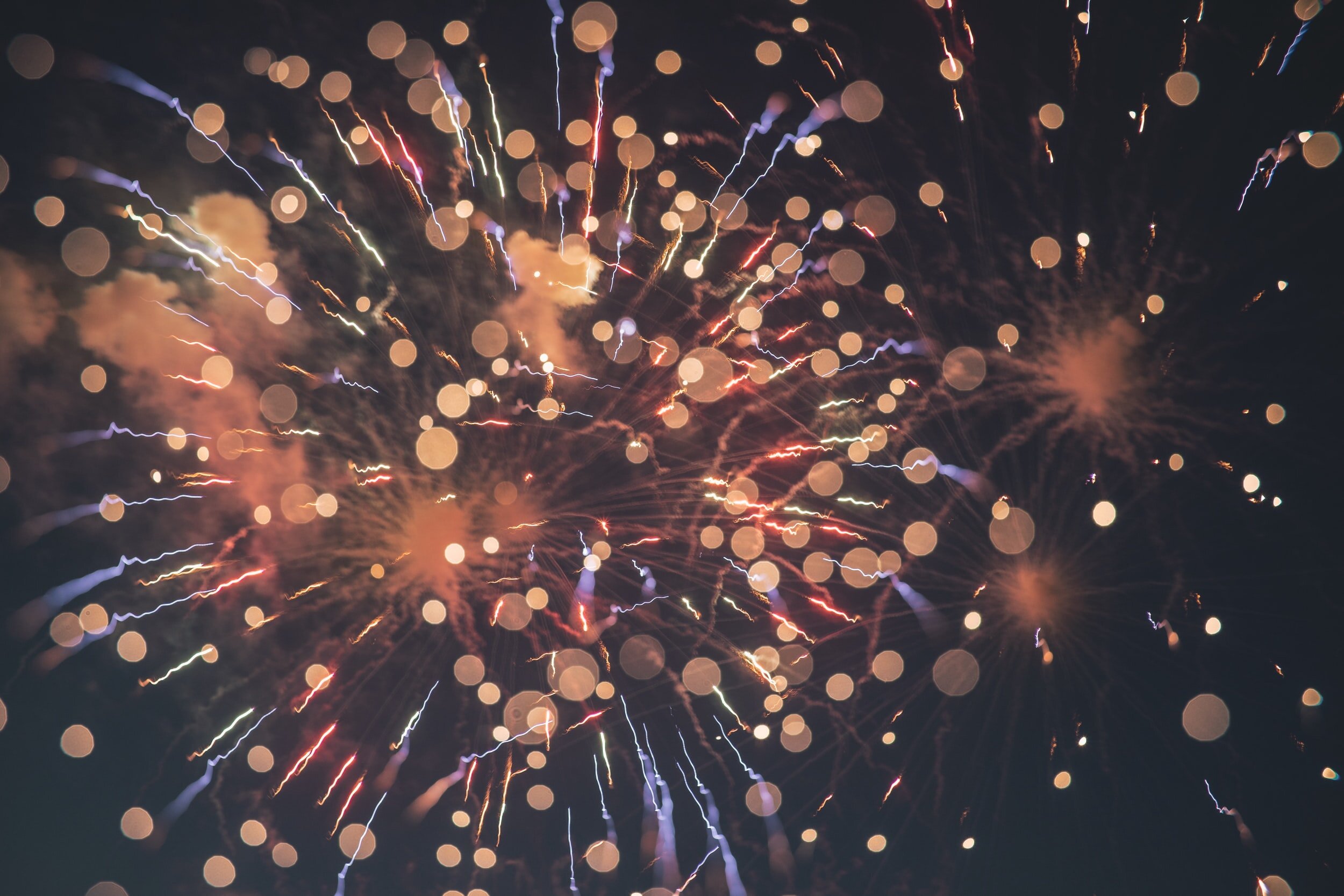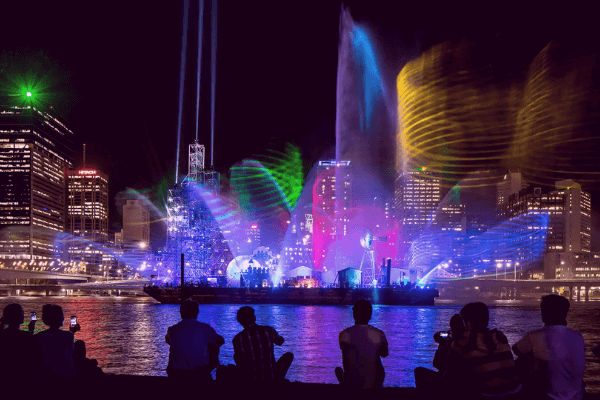
The Impacts of Fireworks
Recently, I was enjoying a peaceful night at home, when fireworks unexpectedly started exploding around my neighbourhood – for no particular reason. The cannon-like booms thumped me in the stomach. Before this, I had never heard a cockatoo screech in terror – it was a horrible sound. It made me realise that all around me some people and many animals were feeling frightened, not knowing what was happening or when it would end. This thought sparked my interest in learning about the full effects fireworks have on people and animals.
Fireworks cause all manner of negative things, from the toxins they release into the environment, the fear they ignite in people, and the terror and deaths they cause to animals. It is time to use an alternative way to celebrate occasions.
Toxins in fireworks
Fireworks are a mixture of sulphur-coal compounds, heavy metals, and other toxic chemicals or gases, such as ozone, sulphur dioxide, and nitric oxide. These toxins become airborne after fireworks combustion and create dangerous levels of air and water pollution. Humans who breathe in toxins and air pollution created by fireworks suffer illness and deaths, mostly from respiratory and cardiovascular causes.
Perchlorate is a chemical that is often mixed with sulphur and charcoal to create the gunpowder and makes fireworks explode. Exposure can inhibit the ability of the thyroid gland to derive iodine from the blood, known as hypothyroidism. This can interfere with the production of thyroid hormones, which are essential to the metabolic and mental development processes. It can also lead to goitre and thyroid cancer.
Strontium, a heavy metal used to produce the bright red colours in fireworks, has been linked to many serious health consequences, including birth-defects, damaged bone marrow, inhibited bone growth, anaemia, and impaired blood clotting.
Some of the other chemicals dispersed by fireworks, such as aluminium, barium, cadmium, dioxins, and rubidium, are radioactive and known carcinogens. Exposure to these chemicals is associated with a host of health conditions, including Alzheimer’s disease, dementia, bipolar disorder, depression, anxiety, heart disease, kidney disease, multiple sclerosis, rheumatoid arthritis, gastrointestinal disorders, and chronic fatigue [1].
The City of Sydney uses carbon-neutral fire-works that still cause pollution but have no chemical effects for party-goers.
Fireworks cause distress for many people
Fireworks can cause distress and anxiety in some people, in particular those with autism or who have experienced war. Some people with autism find fireworks highly distressing, as a loud noise of any kind (fire alarms, school bells) causes suffering and pain. They will often cover their ears to try and block these upsetting noises. Fireworks can also trigger PTSD in people who have come from war-torn countries and Veterans of war, as the fireworks can often sound like gunfire.
Fireworks are terrifying for animals
Fireworks can cause catastrophic suffering to all animals. From wild, companion animals, and those trapped in zoos – no animals enjoy fireworks.
Wild Animals
Bats and birds, who live and fly around the city, can be killed by the sonic shock. They will be, quite literally, knocked out of the sky [3]. In 2010 in Beebe, Arkansas, over 5,000 dead and dying red-winged blackbirds rained down from the skies leading some residents to fear an impending apocalypse [4]. Nesting birds have also been seen exploding from their nests in panic, causing them to smash into trees and other objects, resulting in broken necks. Birds who aren’t killed outright, die from breathing in the smoke from fireworks that contain. The response of most animals is to run. This panic can result in mothers and babies being unable to find each other after the noise.
Companion animals
Dogs can hear up to 60,000hz, while humans cannot hear anything above 20,000hz, so it is little wonder fireworks can be agonising for dogs. Common reactions are freezing or paralysis, uncontrolled attempts to escape and hide, and tremors. Some more intense reactions dogs may exhibit are salivation, tachycardia, intense vocalizations, urination or defecation, increased activity, hyper-alertness, and gastrointestinal disorders. All these signs are indicative of extreme discomfort and stress.
In the US fireworks during the 4th of July celebrations, more terrified dogs bolt and run away than any other day in the year. Dogs shake in fear, with others succumbing to heart attacks. Sometimes even their human companion holding them is not enough to quell their suffering. They believe they are under siege [6].
Horses also experience stress during firework displays. People have reported their horses leaping fences to escape, and others even being hit by cars and suffering horrendous injuries [7].
This dog was so frightened he ran away and became impaled on a fence and died.
Credit: SPCA
Zoo animals
The noise of fireworks makes animals such as rhinos and cheetahs very nervous, also visibly affecting others like elephants, and causing rodents to continue running minutes after the noises cease. Primates may be an exception if they can see the fireworks as well as hear them. The RSPCA UK state on their website that fireworks frighten animals. They concede that wild animals would normally flee loud noises but are unable to do this while trapped in a zoo [8].
In 2019 the Emperor Valley Zoo (the biggest zoo in Trinidad and Tobago) pleaded with event organisers to be mindful of the damage they were doing to animals with fireworks. They stated that Independence Day fireworks had moved closer to zoo animals and it was increasingly difficult to keep animals calm throughout continuous explosions. They advised that for some time after the fireworks ceased animal carers were struggling to restore calm and comfort. A kangaroo in the zoo died from shock [9].
Wellington Zoo, in New Zealand, is calling for an end to private fireworks after a spooked animal died on Guy Fawkes night. The male Nyala – a type of antelope native to southern Africa – was found dead at the Zoo on Wednesday morning. General manager of animal care and science Daniel Warsaw said they believe the Nyala got spooked from fireworks and ran into a fence. “Animals like this Nyala, their natural flight response comes into play and all it thinks about is running away and for this animal … it’s a horrible experience,” Warsaw said. The zoo team were devastated and it was a completely unnecessary tragedy. Warsaw said the time had come for private fireworks to be banned [10].
At Auckland Zoo in the 1980’s, a terrified giraffe broke his neck during the fireworks. More recently, a wallaby joey died after being ejected from their mother’s pouch in a state of acute stress [11].
Fireworks have caused fires
In 2018 in the Northern Territory, there were 27 injuries, 770 emergency calls, and 679 grassfires after 370 tonnes of fireworks were ignited to celebrate 40 years of self-governance [12].
In New Zealand, firefighters were called to more than 50 fireworks-related blazes throughout the country in November 2019, with two major fires igniting at Mt Wellington and Mt Eden. Prime Minister, Jacinda Ardern, likened the noise to war-time and said she would raise firework concerns with local councils to gather their thoughts [13].
Grass-fire caused by fireworks in Northern Territory
Credit: ABC
Other countries have already banned fireworks
Germany has banned individual New Years Eve fireworks due to pressure from animal advocates and environmentalists given the high level of pollution some fireworks cause. Other EU countries have banned individuals from purchasing fireworks and imposed high fines.
It’s time to move to ethical alternatives
Many countries have started using silent fireworks or thrilling laser shows. We have a myriad of ways to party, without causing immense suffering and even death for others. As a nation, we can stand together and demand environmentally friendly ways to celebrate events and commemorate seeing out the old year and welcoming in the new year. Last year, the Sydney NYE fireworks cost $6.5 million for 32 minutes of “entertainment” (20 minutes for the 9 pm and 12 minutes for midnight). The money used could be better spent helping homeless people or assisting other people and animals in need.
If you hear or see fireworks in your area, please contact your local minister asking them to support a ban.
Laser show’s are being used instead of fireworks.
Tips on how to keep animals safe during fireworks
Here are some ways you can keep your beloved companion animals safe during the fireworks:
Exercise them earlier in the day - burning energy will make it easier for them to relax later on.
Create a safe and secure space in your home - remove anything that could cause harm to your animal and have some background noise on (radio/TV). We recommend bringing animals inside, as animals can try to go through fences and windows.
Ensure their collar and microchip has up-to-date information, in case they do become lost.
The best option is to stay home or arrange for someone to give the animal/s company.
Please do not leave dogs tied up, as they can injure/choke themselves when they get scared.
If you come across injured wildlife, Backyard Buddies has a list of rescue groups you can call.




